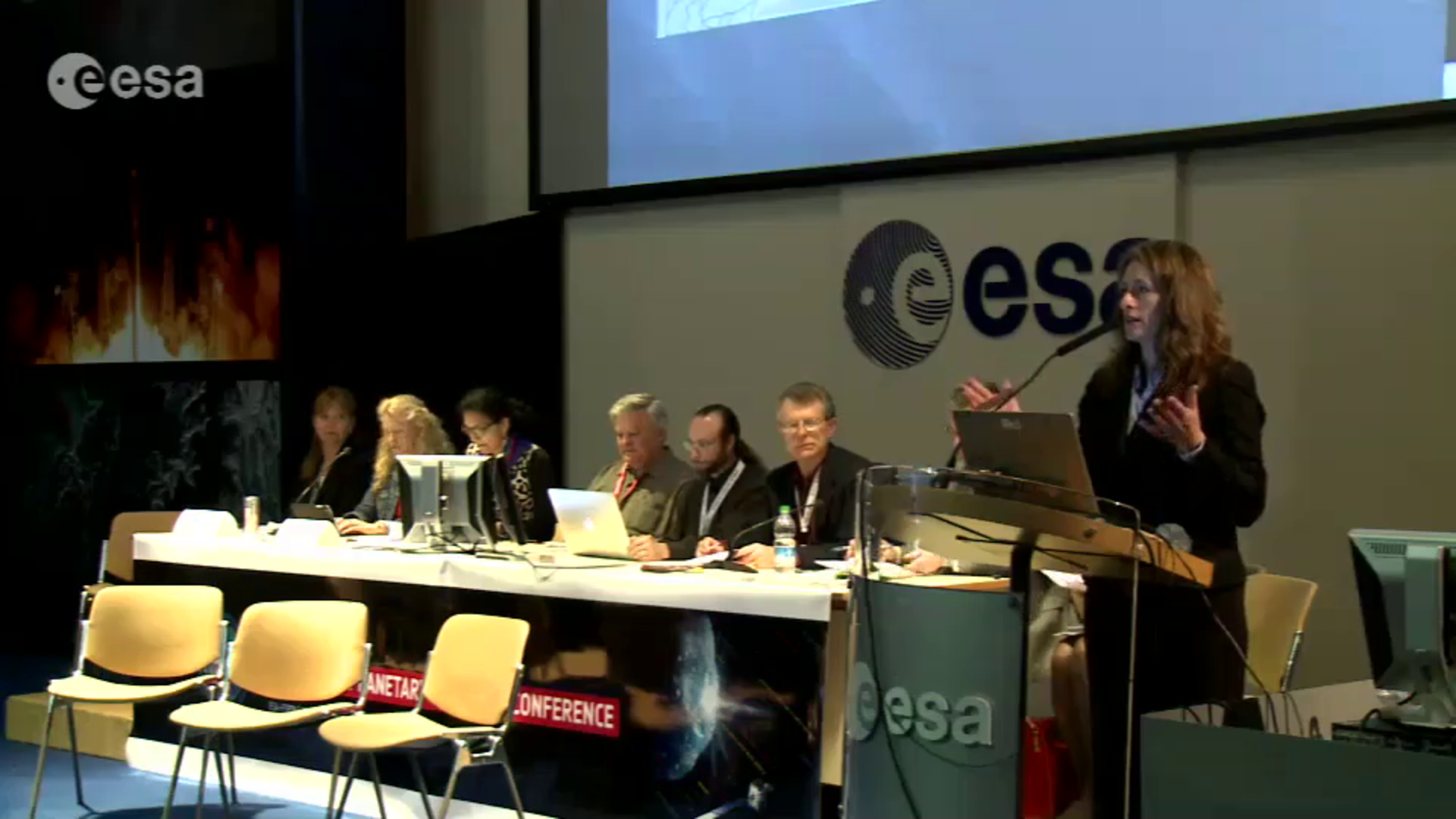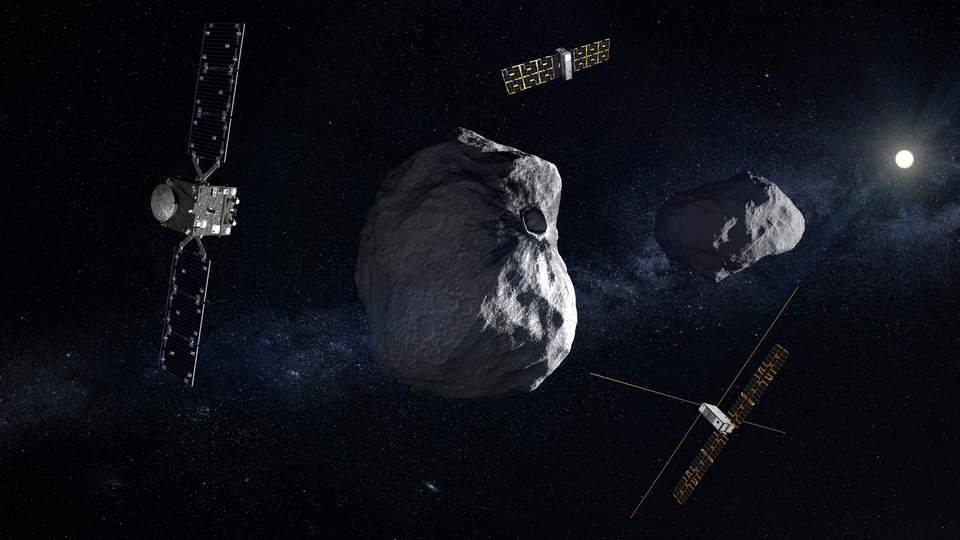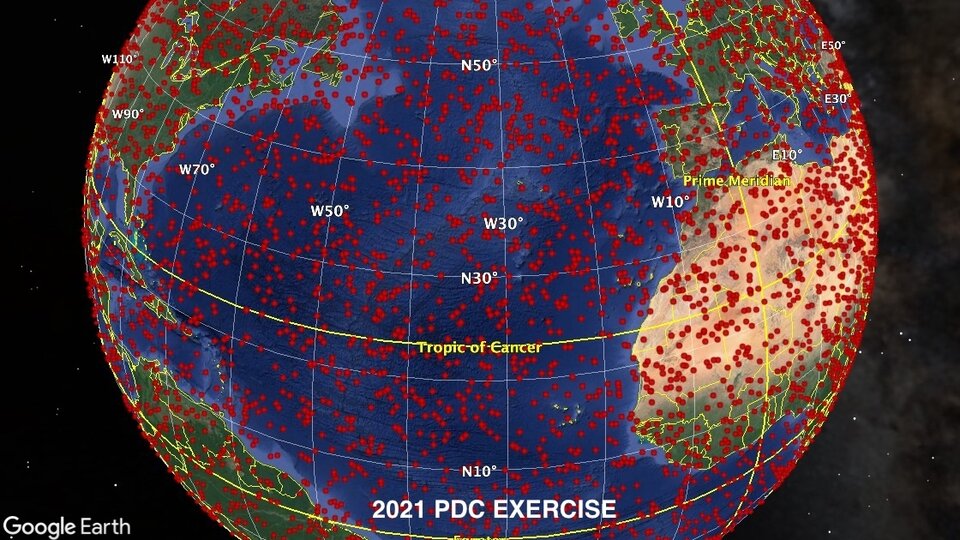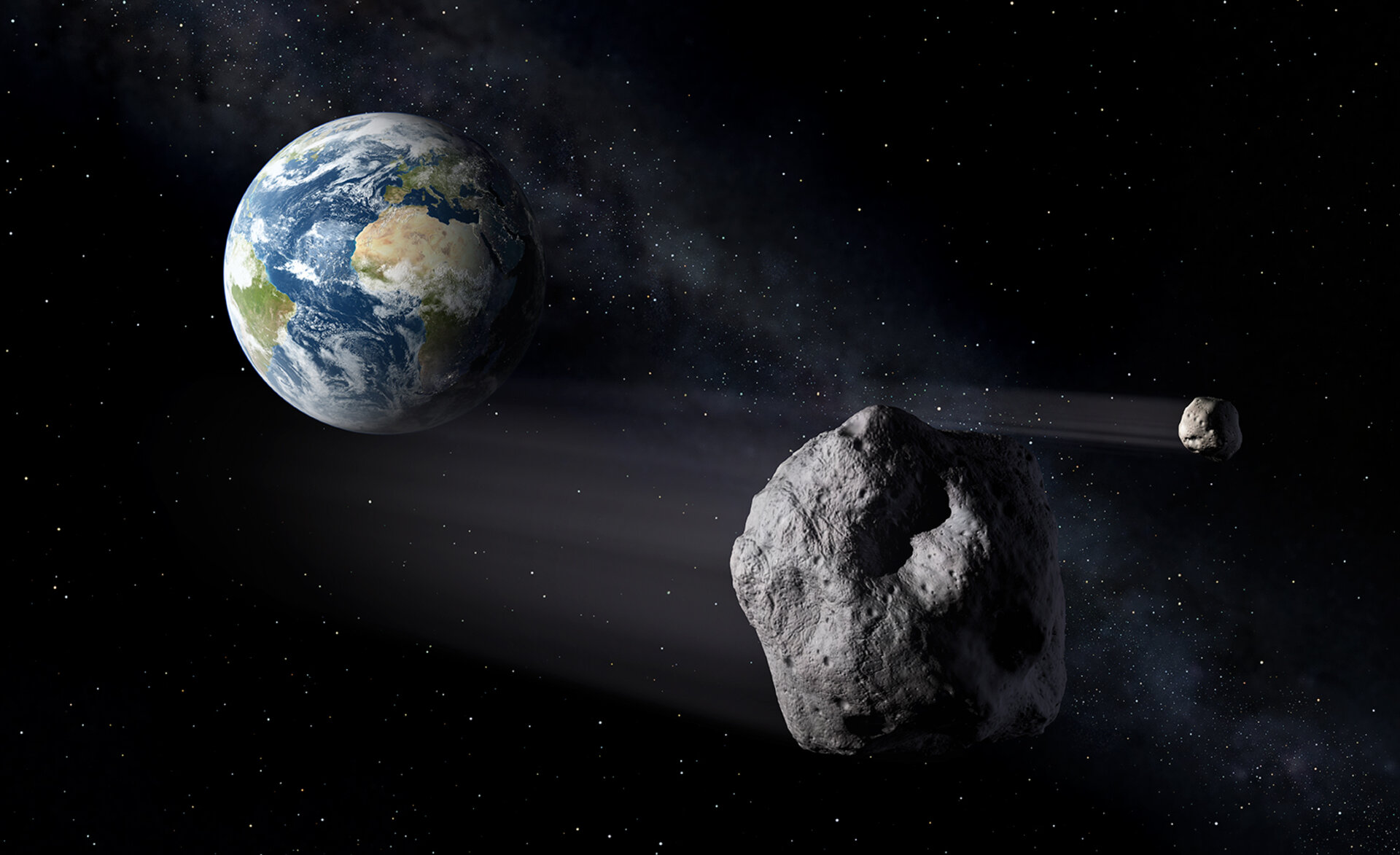ESA to live tweet asteroid impact exercise
For almost a decade, world asteroid experts have been meeting every two years at the Planetary Defense Conference and pretending an asteroid impact is imminent. Why? To prepare for the unlikely – but plausible – scenario in which this comes true.
For the second time in the conference's history, this major international asteroid impact exercise will be covered live via ESA social media, primarily via the @esaoperations in Twitter, highlighting the actions that might be taken by scientists, space agencies and civil protection organisations.
Planetary Defense Conference goes digital
This year’s conference is hosted by the United Nations Office for Outer Space Affairs, UNOOSA, in cooperation with ESA and under the umbrella of the International Academy of Aeronautics (IAA). Many other space agencies and organisations are also involved, including NASA, the International Asteroid Warning Network (IAWN) and the Space Mission Planning Advisory Group (SMPAG), among others.


Access the video
Experts from ESA’s Planetary Defence team, the Near-Earth Object Coordination Centre in Italy and the Hera mission team,will take part, presenting the latest updates from ESA’s planetary defence efforts.
Originally scheduled to take place in Vienna, the conference will take place completely online due to the Covid-19 pandemic.
Along with expert presentations, sessions and panels, this year’s conference will again include a hypothetical asteroid impact scenario, developed by NASA’s Jet Propulsion Laboratory’s Center for Near Earth Object Studies (CNEOS), and it's the job of the attendees to figure out what can be done to prevent calamity.
Risky asteroid spotted? We have options!
Is an impact by a big-ish asteroid possible? Even if unlikely, the answer is ‘yes’.
In 1908, an object estimated at 30-50 m in diameter devastated 2200 square km around Tunguska, Russia; such impacts occur, it is estimated on average, once every two to three centuries. In 2013, an object estimated to be almost 20 m in diameter damaged 7200 buildings and injured some 1600 people in Chelyabinsk, Russia; such impacts occur, it is estimated, every few decades.

Over 95% of asteroids larger than 1 km in diameter have been found, but of the estimated 40,000 asteroids larger than 100 m, less than 30% have been spotted.
During next week’s scenario, participants – playing roles such as ‘national government’, ‘space agency’, ‘astronomer’ and ‘civil protection office’ – don't know how the situation will evolve from one day to the next, but must make plans based on the daily updates they are given.
Fortunately, the chances of an extinction-sized asteroid striking Earth are extremely slim.
“We know of almost all asteroids kilometres in diameter and none are due to strike Earth any time soon. But even a smaller impact – like the Chelyabinsk asteroid in 2013 – can cause damage or injury and it is vital that we are prepared,” explains Detlef Koschny, Head of ESA’s Planetary Defence Office.
“Not only does this give us time to alert government agencies so they can respond to such a scenario, but, as ‘Hollywood’ as it may sound, we are developing mission concepts and technology to potentially deflect an Earth-bound asteroid, given enough warning.”
Proving deflection
Later this year, NASA is set to launch its Double Asteroid Redirection Test (DART) mission, which will fly out to asteroid Didymos and conduct a controlled, high-speed impact on the asteroid’s smaller companion rock, Dimorphos, which is about 160 meters in diameter. The impact will nudge the target just a tiny bit, but enough that telescopes on ground can measure the resulting deflection and assess if the technique works.
In 2024, ESA’s Hera spacecraft will conduct its own mission to Didymos. It will survey the DART impact crater, determine the asteroid’s mass with extreme precision and characterise its properties, composition and structure.
The complimentary science results from both missions together will enable humanity to be confident in our capability to employ asteroid kinetic impact deflection as a proven planetary defence technique.
This year’s asteroid

Although this scenario is realistic in many ways, it is completely fictional and does
NOT describe an actual potential asteroid impact.
Asteroid 2021 PDC
- An asteroid is discovered on 19 April 2021 and given the name 2021 PDC by the Minor Planet Center. The day after 2021 PDC was discovered, ESA and NASA’s ‘impact monitoring systems’ identified several future dates when the asteroid could hit Earth, agreeing that the most likely potential impact occurs on 20 October 2021 – just 6 months away – but the probability of that impact is low, about 1 in 2500.
- Very little is known about this newly discovered asteroid’s physical properties, particularly its size. Estimates based on its apparent brightness put it at about 120 metres, but its true size could range anywhere from 35 - 700 metres.
- Astronomers continue to track the asteroid every night after discovery, and the impact probability steadily increases. As of 26 April 2021, the first day of the 2021 Planetary Defense Conference, the probability of impact has climbed to about 5%. The rest of the scenario will be played out at the conference.
Follow live and have your say
Follow @esaoperations in Twitter for live coverage of the impact exercise beginning Monday 26 April, and for daily summaries, analysis and comment check out the Rocket Science blog.


